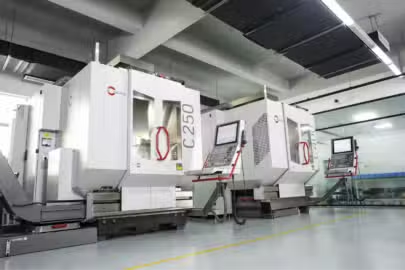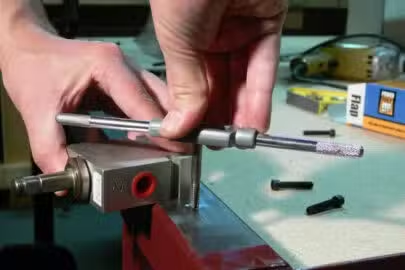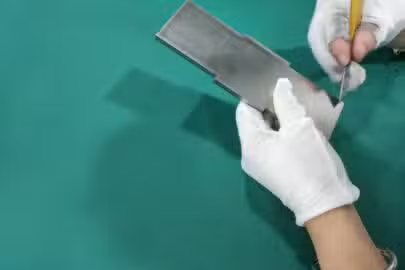Electrical discharge machining is a subtractive manufacturing process that is very different from most traditional machining processes, such as CNC turning and milling. Sharp cutting tools are required in the latter processes to remove material from the machined work part. Unlike turning and milling, EDM takes advantage of metal erosion caused by electrical discharges.
Keep reading to discover more about the fundamental concepts underlying EDM manufacturing.
What Is Electrical Discharge Machining?
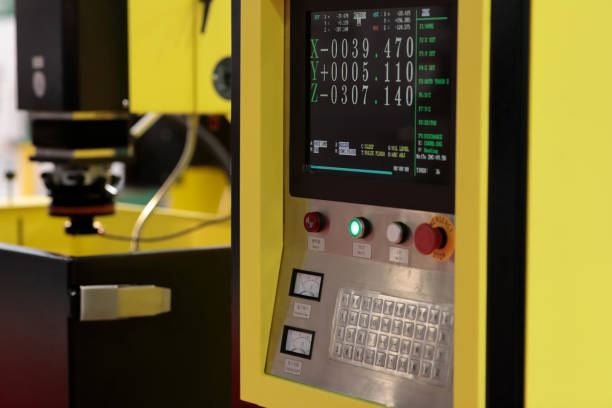
Electrical Discharge Machining (EDM) is a manufacturing technique that removes material from a workpiece by combining thermal and electrical energy. This unorthodox machining method is frequently used to produce complex geometries, fine details, and complex shapes in hard materials.
Because the EDM process doesn’t employ mechanical force to cut as traditional machining processes do, machinists view it as unconventional. Frustrated that they could not machine strong materials, machinists invented this machining technique.
EDM (electric discharge machining) is a useful process for material removal when other traditional methods fail. Electrical erosion is the basis for this over three-century-old process.
Different machining method specialists refer to EDM processes by other names, such as die-sinking EDM, wire erosion, spark machining, spark eroding, and wire burning. The main components of the EDM process are the electrodes, electrical discharge, dielectric fluid, and workpiece to be machined.
How Does EDM Work?
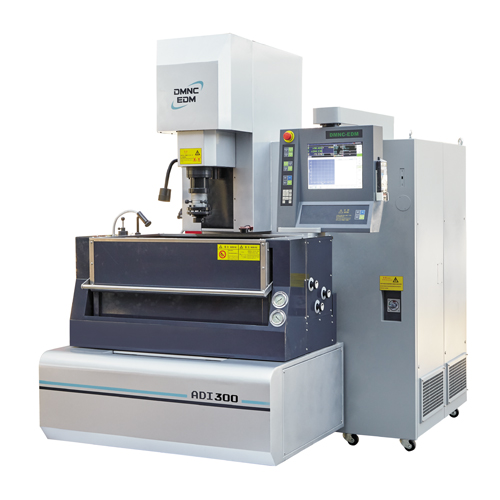
Electric sparks are used on the EDM machine in electrical discharge machining to erode certain areas of the workpiece. These so-called “electric sparks” are electric arcs created when two conductors carrying current are brought near one another. The electrically conductive materials melt and evaporate due to the intense heat produced by the electric arcs. The workpiece is joined to the positive terminal, or anode, inside the EDM process system, and the tool that erodes materials is connected to the negative terminal or cathode.
Basic Construction Of An EDM System
Here is a breakdown of the fundamental components of an electrical discharge machining (EDM) system to help clarify the working principle:
- Dielectric fluid
A dielectric fluid is injected into the space between the electrode tool and the work part, submerging both in the process. In addition, it is essential to maintain a constant pressure for the dielectric fluid to flow to remove any eroded metal from the workpiece. An excessive amount of fluid pressure could hasten the removal of the metal chips, slowing down the cutting process. The unevacuated chips from the erosion process could result in a short circuit in the system if the fluid pressure is too low.
Glycol, silicone oil, and deionized water are the most often utilized dielectric fluids in this procedure.
- Spark generator
This part provides the precise voltage required for spark production and discharge maintenance. Significant material subtraction from the work part is possible due to the production of 100,000 sparks per second.
- DC Pulse Generator
This part transforms the AC power source into a DC power source that pulses high enough to ignite a spark between the workpiece and the eroding tool.
- Servo Motor Mechanism
This mechanism manages the EDM machine’s tool feed and movement. A servo motor mechanism with programming is responsible for the arc gap’s critical control, as previously mentioned.
- Electrode Tool
This system component is mounted on a tool post and connected to the power supply’s cathode. Your tool’s profile will match the exact profile left in your work area. The process maintains a tiny space between the electrode tool and the work part, which manufacturing engineers call the arc gap. The most popular electrode materials are graphite, steel, cast iron, copper, and tungsten alloy.
- Workpiece
Because the anode and work portion are connected, this completes the ecosystem of the EDM machine. A high-quality electric conductor is required for the work part to make the process feasible.
What Are the Types of Electric Discharge Machining
Electric discharge machining can be grouped into three common types: hole-drilling EDM, Wire EDM, and Die sinking EDM.
Hole Drilling EDM
Hole drilling EDM, or small hole drilling EDM, is a technique used for hole machining. In contrast to conventional hole drilling techniques, this method can precisely machine tiny and deep holes that don’t require deburring.
The same basic ideas that underpin die-sinking EDM also apply to this technique. But instead of using a pulsating cylindrical electrode, a dielectric liquid is fed into the cutting area as the electrode moves deeper into the workpiece to cut. This technique has been essential to developing high-temperature turbine blades because it makes it possible to create highly complex cooling channels inside the turbine blades.
Wire EDM
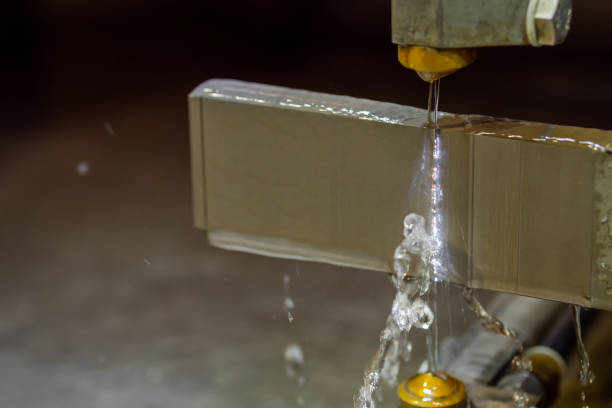
One common method for creating extrusion dies is wire erosion, called wire EDM. The exact mechanism of die-sinking is used for cutting. A very thin, electrically charged wire is used in its place to serve as the electrode instead of the die. Making a two-dimensional cut in a three-dimensional object, this machining technique is similar to using a cheese cutter.
A diameter of between 0.05 and 0.35 mm is typical for this extremely thin wire. A new wire is automatically spooled during the machining process for accurate cutting and to prevent the use of burned wire.
Extremely accurate cuts will be produced by this process. On the other hand, wire EDM alone cannot provide true square corners if you want to cut sharp inside corners. The tiny radius created by the wire and spark gap is approximately 0.13 to 0.15 mm, but it can vary depending on the wire’s diameter.
Should that prove insufficient for your undertaking, you can always apply a tiny dog-bone corner to achieve precisely square interior corners. Occasionally, it becomes essential to begin a cut from the middle of a component instead of one of its edges. Like when a complicated shape is machined out of the center of an extrusion die. If so, wire EDM machining can be performed by hole drilling EDM to create a tiny hole through which the wire can pass.
Die sinking EDM
The best Electro Discharge Machining method for producing rapid prototyping parts with intricate cavities is EDM, Ram EDM, conventional EDM, or cavity-type EDM. When using CNC machining, this approach is also selected to address the problem of sharp internal corners. An electric spark is created between the electrode and the workpiece using graphite or copper electrodes, a dielectric fluid, and this technique.
An electrode is created in the required cavity’s reverse shape as the first step in this process. This makes up the die. Next, while the die is immersed in an oil-based dielectric fluid, a voltage is induced between it and the electrically conductive workpiece.
A spark can cross the “spark gap” when the die is gradually lowered towards the workpiece, causing “electric breakdown.” The dielectric fluid removes any ejected particles after the material from the workpiece is vaporized and melted. During this process, there is also a small amount of electrode erosion that frequently occurs.
With each high-frequency spark burst, the workpiece loses a tiny amount of material, causing the desired shape to form and be cut out gradually. Accurate machining ensures total control over this process, including the servers, power supply, and electrode placement.
Benefits of Electric Discharge Machining
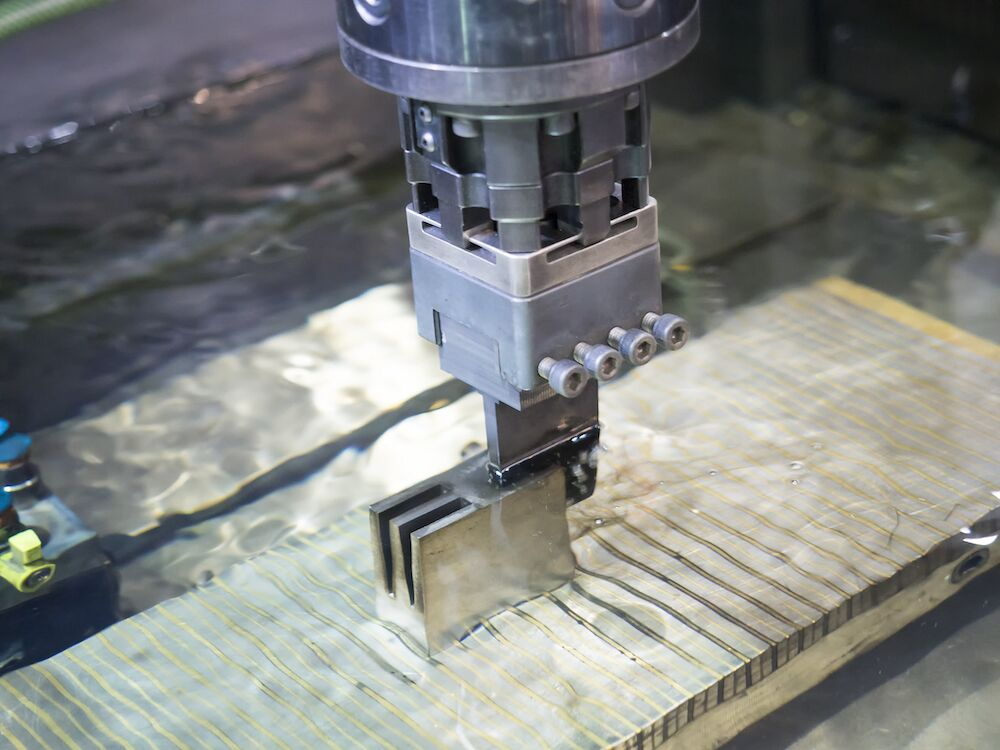
Electric discharge machining, like any other machining process, has advantages and disadvantages, as you have already discovered. You’ve probably noticed a few advantages to this process, beginning with the fact that it can machine hard materials. In this section, we will go over some of the benefits of electric discharge machine in greater detail.
Top Notch Surface Finish
Regarding surface finish, spark EDM can produce a high-quality surface finish compared to other machining methods. The electrical spark that die-sinking EDM and other EDM machines use leaves a flawless surface finish.
Conventional drilling and cutting methods may not leave such a quality surface finish. Instead, they tend to produce roughness and marks on the workpiece surface. This is one of the advantages we will mention to a customer, especially if they are looking for better aesthetics and performance of their products. Again, a spotless surface finish is essential for medical, aerospace, and related industries.
This benefit affects more than just the part’s aesthetics and performance. A good surface finish can help you save money on post-machining processes. A smooth surface may eliminate the need for sanding and polishing. Cost and time savings can significantly impact a manufacturing process’s profitability.
Not Affected by Material Hardness
One of its main benefits is that the efficiency of electro-discharge machining is unaffected by the hardness of the workpiece material. Any material, regardless of its hardness, can be processed using this method. This comprises Nimonic, Nitralloy, Inconel, hardened steel, and tungsten carbide.
These qualities have greatly benefited the sector since titanium and nickel alloys are used in the aerospace sector. Using traditional machining methods to mill or turn these materials can be challenging. Nevertheless, small hole drilling EDM and other EDM machines make processing them very simple.
Tight Tolerances
EDM machining yields higher levels of accuracy when machining metal than other machining techniques like laser and plasma cutting. EDM electrical discharge machining can achieve extremely high precision to meet requirements and fit particular dimensions.
It has extremely tight tolerances because it applies no force to the workpiece. Because of this, following the electrical discharge machining (EDM) process, the component does not require additional machining.
Allows Various Shapes and Depths
Few machining techniques match EDM machining’s ability to create three-dimensional forms and shapes. EDM machines, however, can create a variety of depths and shapes. This method can produce the required results regardless of the depth and complexity of the machining.
Because of this benefit, electro-discharge machining has been used in many industries employing crucial components. For example, complicatedly shaped parts that are challenging to create with conventional mechanical forces and associated machining techniques are frequently used in the aerospace industry. This also holds for the medical field, where precise machining specifications may be needed for prosthetics and other products.
What Are The Limitations Of The EDM Process?
Here are some of the drawbacks of using the EDM process:
High Production Cost
Several factors, including high power consumption, excessive tool wear, and lengthy machining times, contribute to the cost of producing parts using EDM.
Low Rate of Material Removal
As discussed, EDM machining gradually erodes the material. This makes its material removal rate much slower than conventional machining processes like milling and turning.
Only Suitable for Conductive Materials
Since the introduction of electrical discharges generates heat that erodes the material on the work part, EDM machining is incompatible with non-conductive materials like composites, plastics, and other dielectric materials.
What Are the Applications of Electrical Discharge Machining?
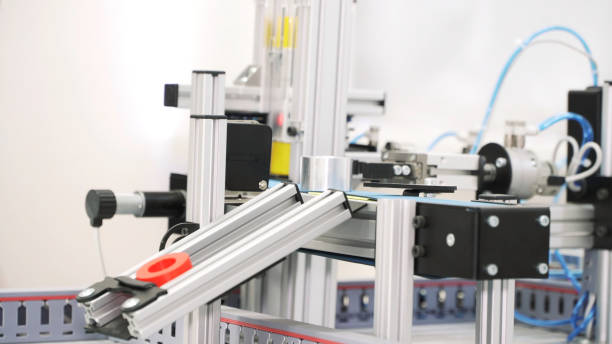
EDM is especially well-known for small-scale production, which enables several procedures. These procedures consist of CNC turning, CNC milling, drilling small holes, and other procedures. This unique method benefits many industries, including the aerospace and automotive sectors.
Aerospace Components
An aerospace part has many features that can’t be produced with some common cutting tools; this is where EDM machining is useful. Tight deep hole requirements, thin slots, sharply squared holes, and turbine rotor discs are just some problematic features that EDM machining can create.
Small Hole Drilling
Irrespective of the hardness of the material, electrical discharge machining is a fast and innovative way to drill precise, tiny, deep holes in it.
Electrical discharges are directed onto the material using a brass electrode tube during the hole drilling procedure. This aids in producing holes of different tiny diameters. Its ability to create holes in difficult positions and on incline faces is exciting.
Medical Components
EDM machined products are ideal for producing different medical implant components because they do not produce burrs during manufacturing.
Die Casting
Applications involving die-making also benefit significantly from EDM. Creating extremely precise dies requires a high degree of accuracy. These dies have deep ribs, sharp internal corners, and other detailed features.
Moreover, very hard steel alloys are frequently used to make dies. Typically, these alloys are more difficult to machine using conventional techniques. The finishing of the hard steel alloys might be necessary before heat treatment, which could decrease detail accuracy. As a result, using the EDM process makes more sense.
Components Disintegration
Metal that has become stuck inside a workpiece and cannot be removed using conventional methods is also removed using an EDM machine. Destroying or extracting the material is necessary to disintegrate the stuck components. Sheared bolts on threaded holes toolings on machined parts, and pins stuck on precious parts are a few examples of situations. You can get rid of the stuck metal without harming the part that has to be reclaimed by dissolving the components.
Injection Molding
EDM is usually required to achieve the proper mold dimension, depth, and shape. Mold makers use it as their primary injection molding process. In this instance, wire EDM is the primary type.
In most cases, injection molding is the best option because it requires a variety of intricate and delicate workpieces. Furthermore, it frequently yields an EDM surface finish with excellent precision.
When to Use EDM
These are some of the situations where you might have to use EDM:
- Removing broken tools from workpieces
- Cutting sharp internal corners
- Drilling curved holes
- Engraving on hard materials
- Cutting extrusions
- Cutting rotary forms
- Creating injection molding tools
- Micro-hole drilling
Conclusion
In many cases, electrical discharge machining is a beneficial addition to traditional CNC machining techniques. It plays to its strengths when it comes to producing unique features that are challenging to achieve through milling and turning. Furthermore, the EDM process exhibits low strain during processing and maintains exceptional accuracy even when cutting very hard electrically conductive metals.
Our EDM procedures at Zintilon are the ideal answers for your manufacturing requirements. We can produce high-precision cutting with this method, which is effective with any conductive material. Regardless of your parts needs and applications, this will enable us to provide better service. Get an instant quote by uploading your design file now. Our fees for all services are reasonable.
FAQs
What Surface Finish Can Be Gotten With the EDM Process?
Generally, Electrical discharge machine (EDM) produces a smooth or mirror-like finish. The surface finish for EDM often differs from conventional machining finishes. The cutting processes create a finish with some directionality. The movement of the tool determines the direction of the finish. For instance, more cuts made at a slower pace help produce a remarkable surface finish.
What Materials Can Be Machined by EDM?
All materials used in electrically conductive workpieces are generally suitable for EDM manufacturing. These materials that conduct electricity include superalloys, alloys, brass, aluminum, and solid steel. The two main factors affecting the type of electrode material are resistance to erosion and electrode conductivity. However, some materials present difficulties during machining, like high-nickel alloys used in aircraft. Changing the electrode material or the machining speed is an alternative, though.


